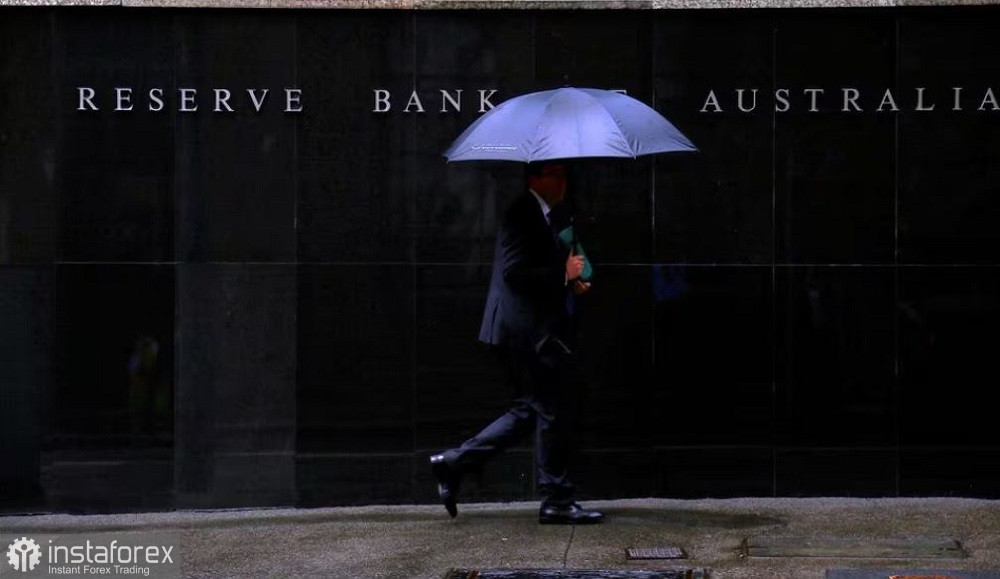The AUD/USD currency pair tested the 0.6490 support level on Monday, corresponding to the lower line of the Bollinger Bands indicator on the daily chart. This is the lowest price since November 17 of the previous year. However, sellers were unable to overcome this price barrier impulsively – buyers took the initiative, organizing a small correction.
But this does not mean that the downward trend has stalled. If we look at the weekly chart of AUD/USD, we will see that the pair is within a clearly defined downward trend since the beginning of January, for the past five weeks (the sixth week started today). Therefore, price pullbacks of several tens of points are only temporary, corrective in nature – there are no prerequisites for a global reversal at the moment. Moreover, as early as Tuesday, the AUD/USD pair may receive a strong downward impulse if the results of the RBA's February meeting does not favor the Aussie.

The formal results of tomorrow's meeting of the Reserve Bank of Australia members are predetermined – the regulator will keep all parameters of monetary policy unchanged. Therefore, the main attention of traders will be focused on the wording of the accompanying statement and the tone of the rhetoric of RBA Governor Michele Bullock.
In anticipation of the meeting, Reuters conducted a survey, which reflected the market's confidence that the RBA will adopt a wait-and-see position in February: all 29 surveyed economists stated that the rate would remain at 4.35%. Experts also unanimously agreed that the central bank would not raise the rate further in the current cycle. This means there are two options – keeping it at the current level and lowering it.
Indeed, the date of the first round of easing is the key question traders of AUD/USD expect to hear the answer to. Of course, it is not about a specific date – approximate terms are of interest, which are currently a subject of debate among experts. For example, currency strategists from major banks such as Westpac and CBA expect the first cut at the September meeting. Their colleagues from NAB and ANZ are orienting their clients toward November.
However, to strengthen the downward trend of AUD/USD, the central bank does not necessarily need to talk about rate cut timelines. It is enough to declare readiness for monetary policy easing. And judging by the dynamics of key macroeconomic indicators, the Bank is indeed softening its stance and may allow the implementation of the "dovish" scenario.
The main argument in favor of this version is inflation. Last week, it became known that the Consumer Price Index in Australia for the fourth quarter increased by 4.1% on an annual basis, with a forecast of 4.3%. The indicator shows a downward trend for the fourth consecutive quarter. In quarterly terms, the CPI also entered the red zone, reaching 0.6% (forecast – 0.8%)—the lowest value of the indicator since the first quarter of 2021. The monthly inflation figure also fell short of the forecast: in January, the index reached 3.4% with a forecast of 3.7%. The indicator has been declining for the third consecutive month.
Against the backdrop of slowing inflation, the situation in the Australian labor market is deteriorating. Almost all components of the latest report are in the "red zone," reflecting unhealthy trends. For example, in December, unemployment remained at the November level (i.e., at 3.9%) despite the forecast decline to 3.7%. Except for November 2023, this is the highest value of the indicator since June of the year before last.
The growth in the number of employed was a significant disappointment; it ended up in the negative zone, plummeting to -65,000—the weakest result since October 2021. The structure of this indicator indicates that the full-time employment component fell by 106,000, while the part-time employment component rose by 40,000. As known, permanent positions offer higher wages and greater social security compared to temporary jobs. This factor affects the dynamics of wage growth and indirectly impacts the dynamics of inflationary growth. Therefore, in this case, the Australian jobs report component signals negative trends.
Also, the share of the economically active population in Australia has decreased. This indicator showed an upward trend in October and November (rising to 67.3%), but in December, it fell to 66.8% (with a forecast of a rise to 67.4%).
Thus, considering the preceding fundamental signals, it can be assumed that the Reserve Bank will soften its position at the end of the February meeting by allowing a reduction in the interest rate this year (so far, with an open date).
A more "dovish" tone in the accompanying statement, combined with a reduction in inflation forecasts, will exert significant pressure on the Aussie. The targets for the downward movement of AUD/USD are 0.6450 (lower Bollinger Bands line on H4) and 0.6400.





















